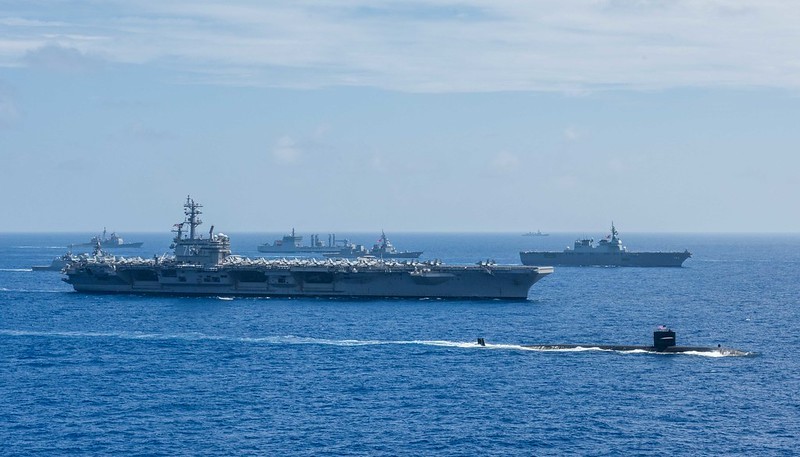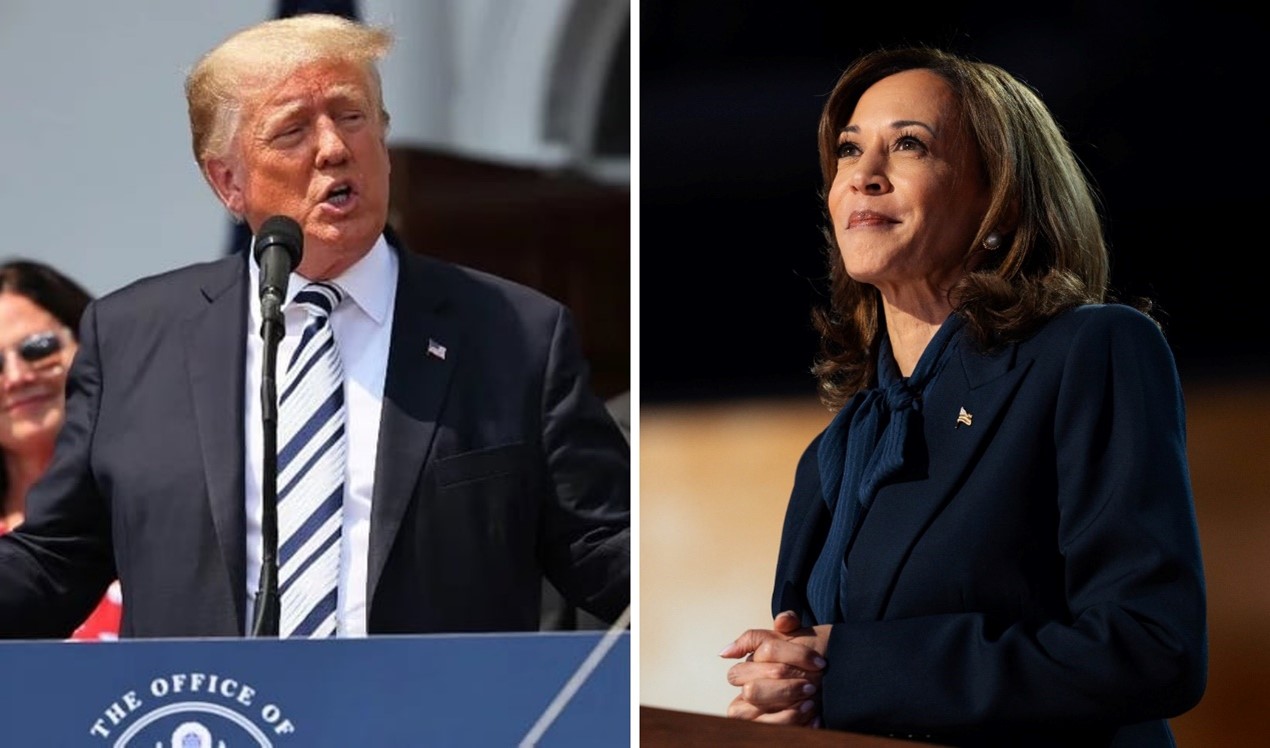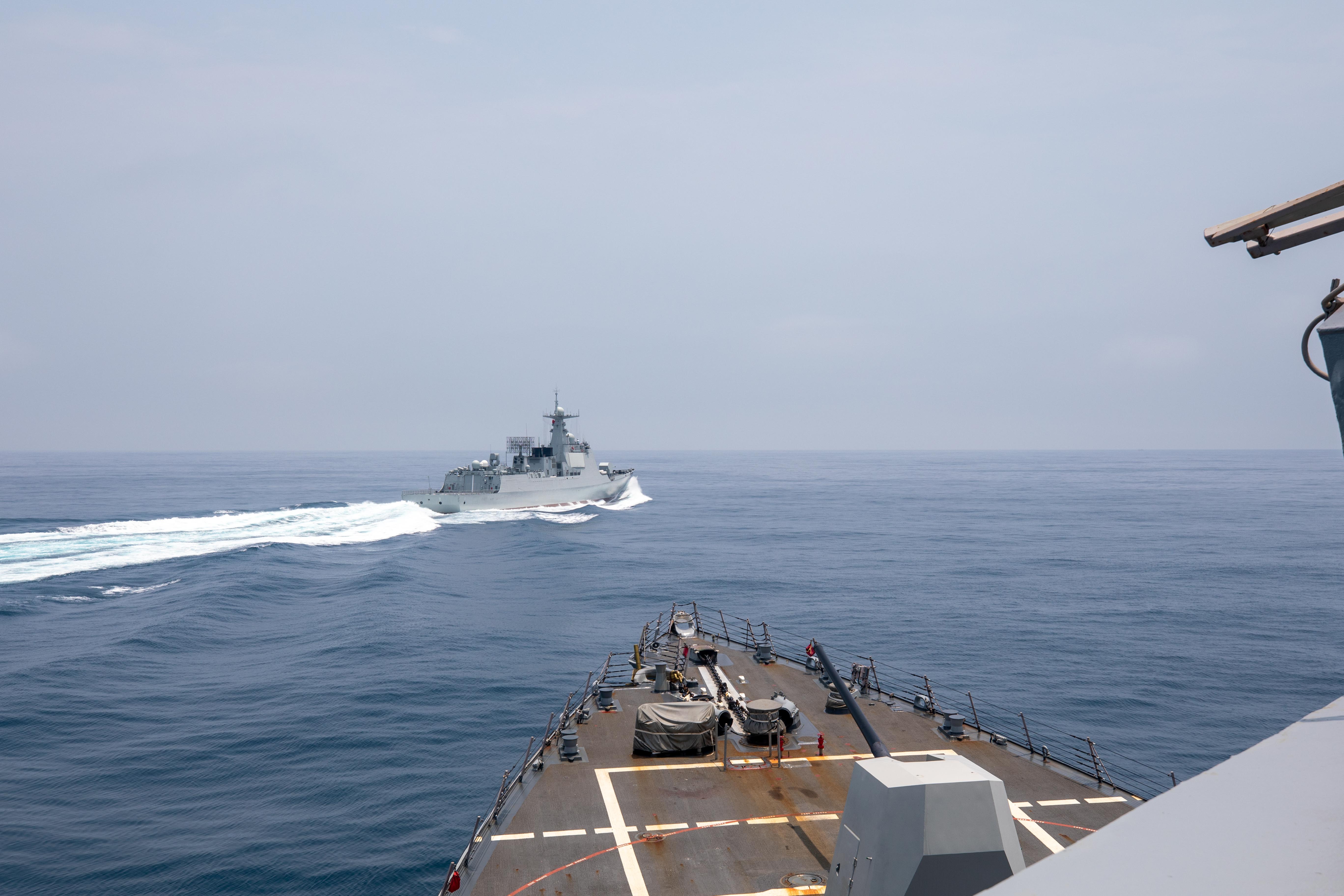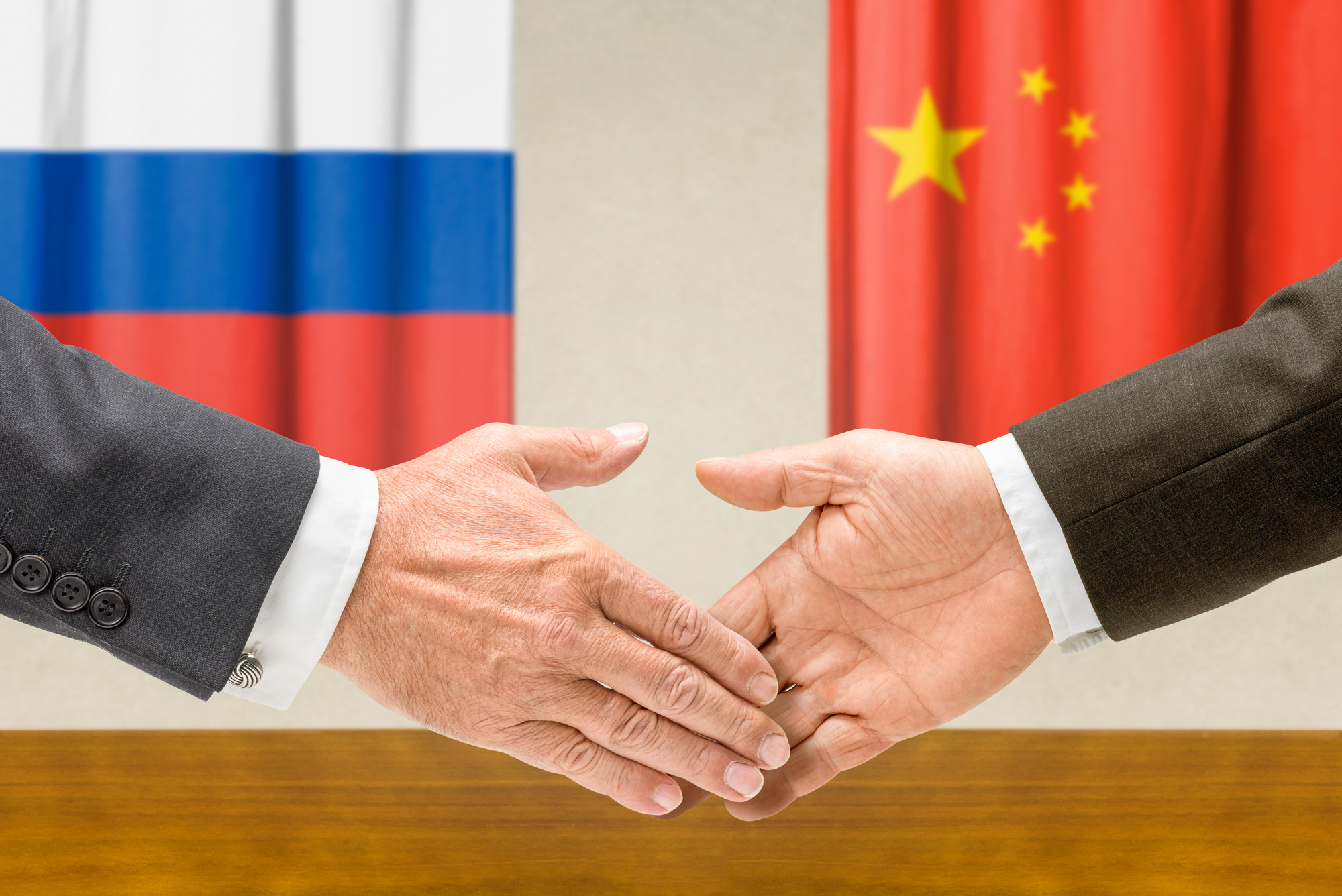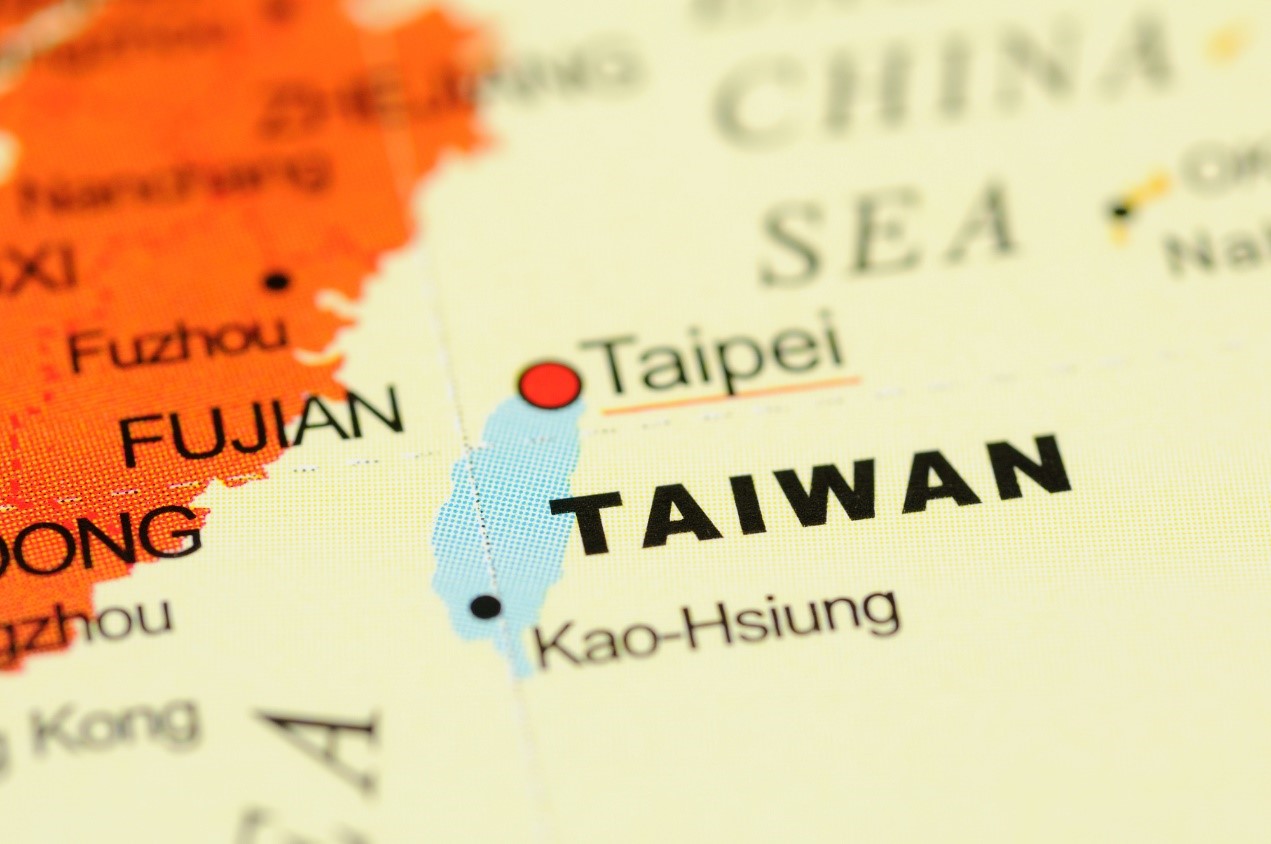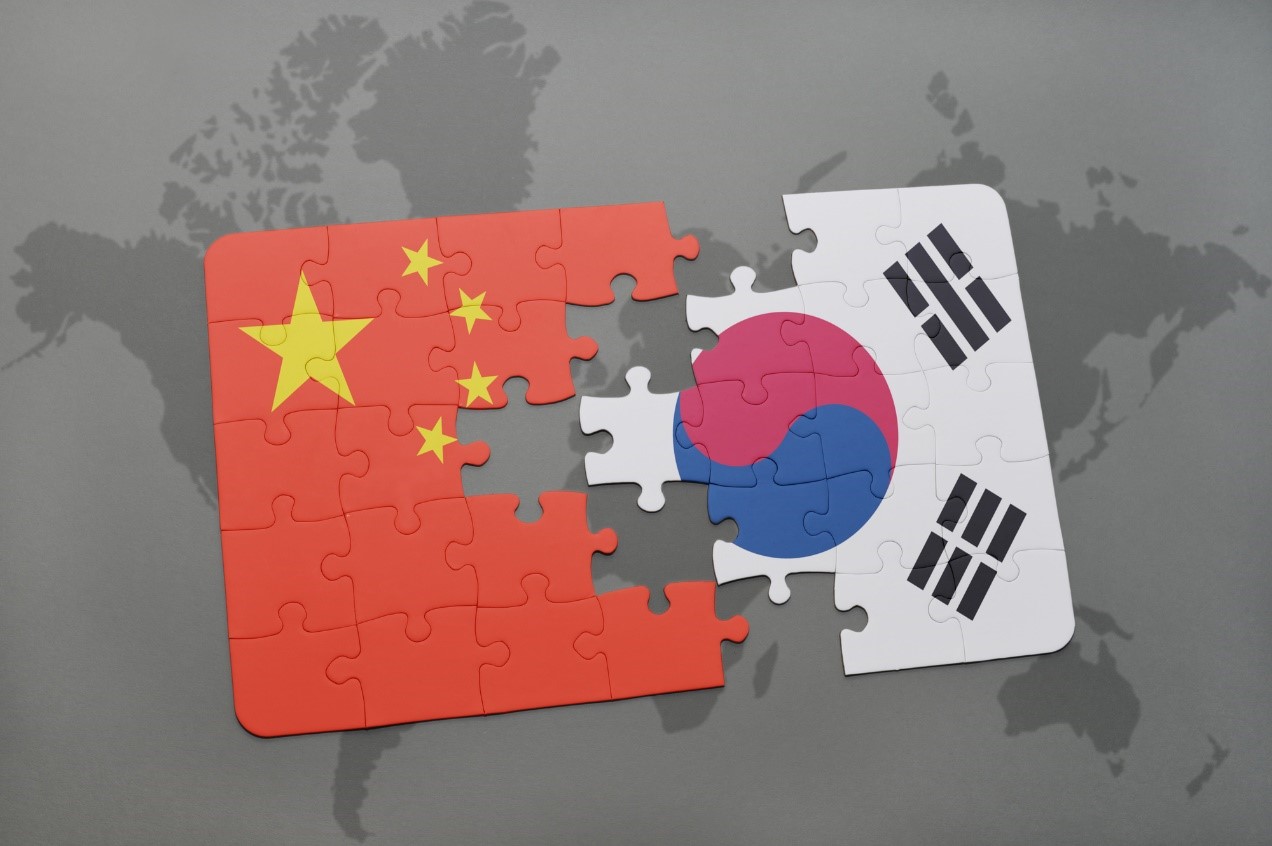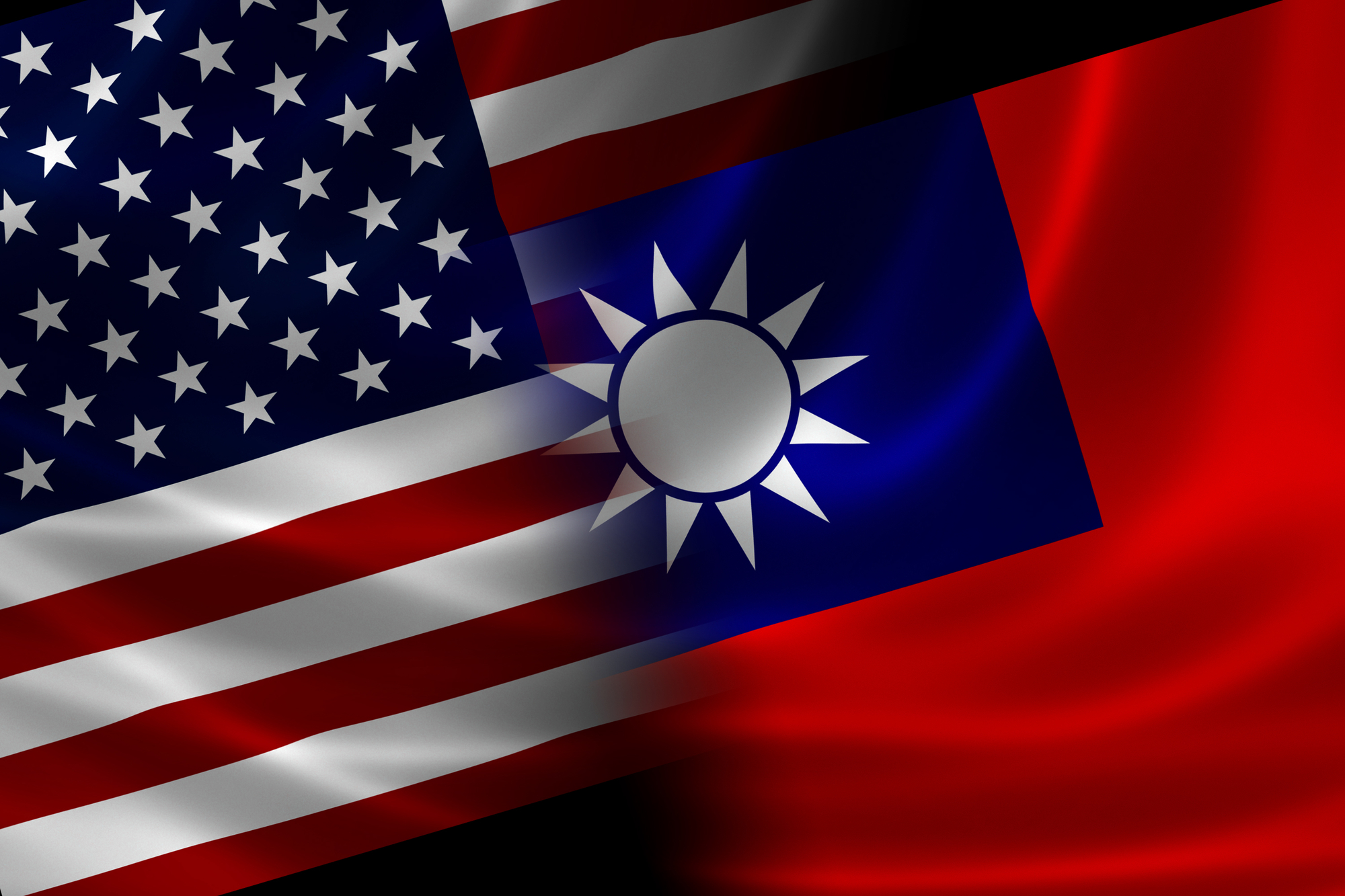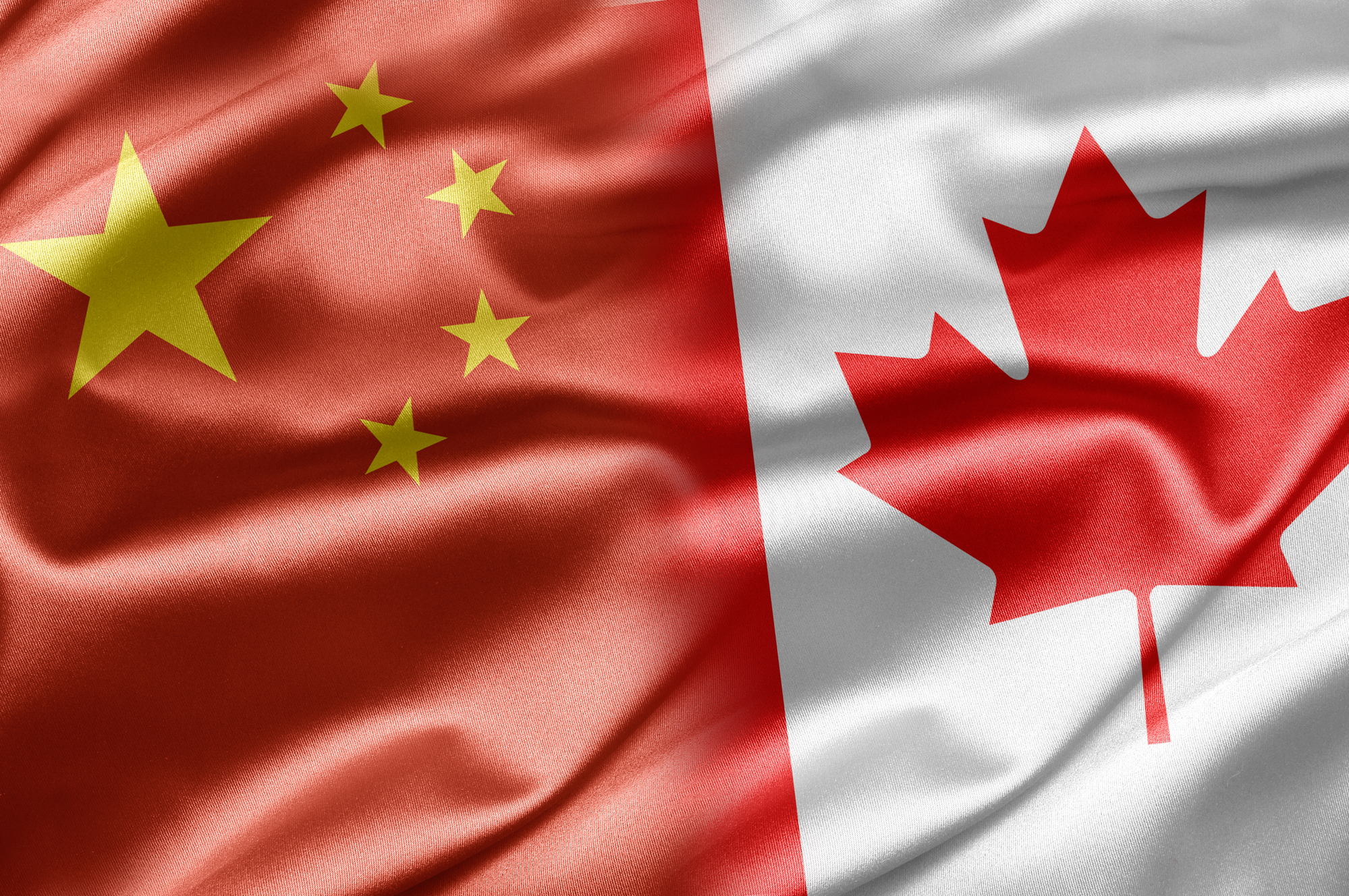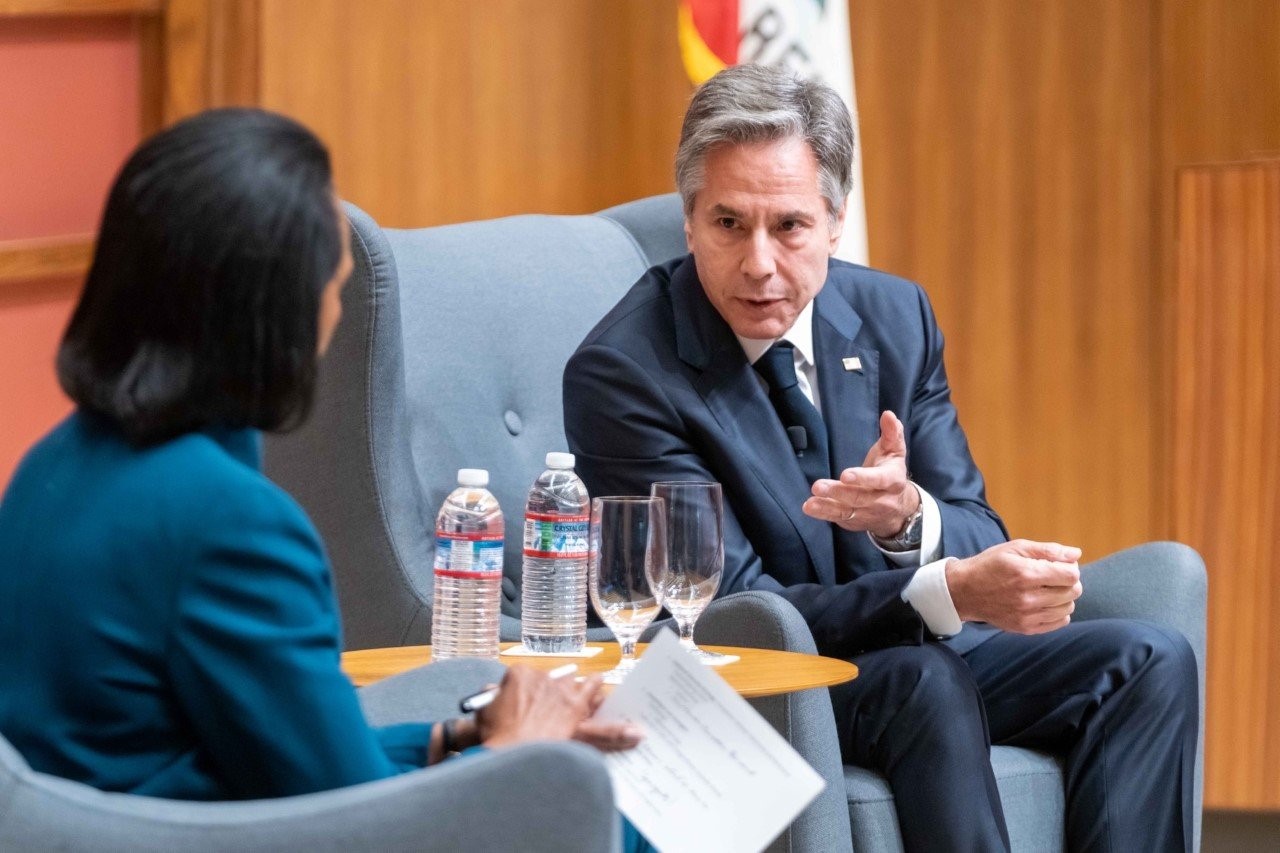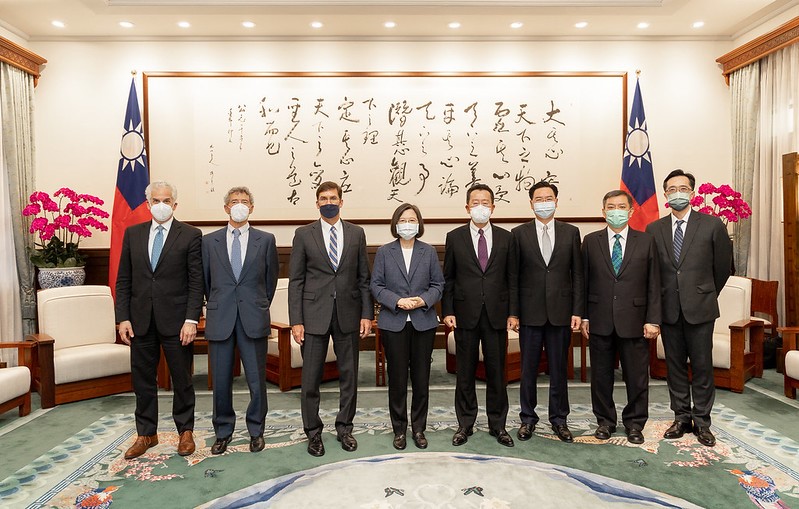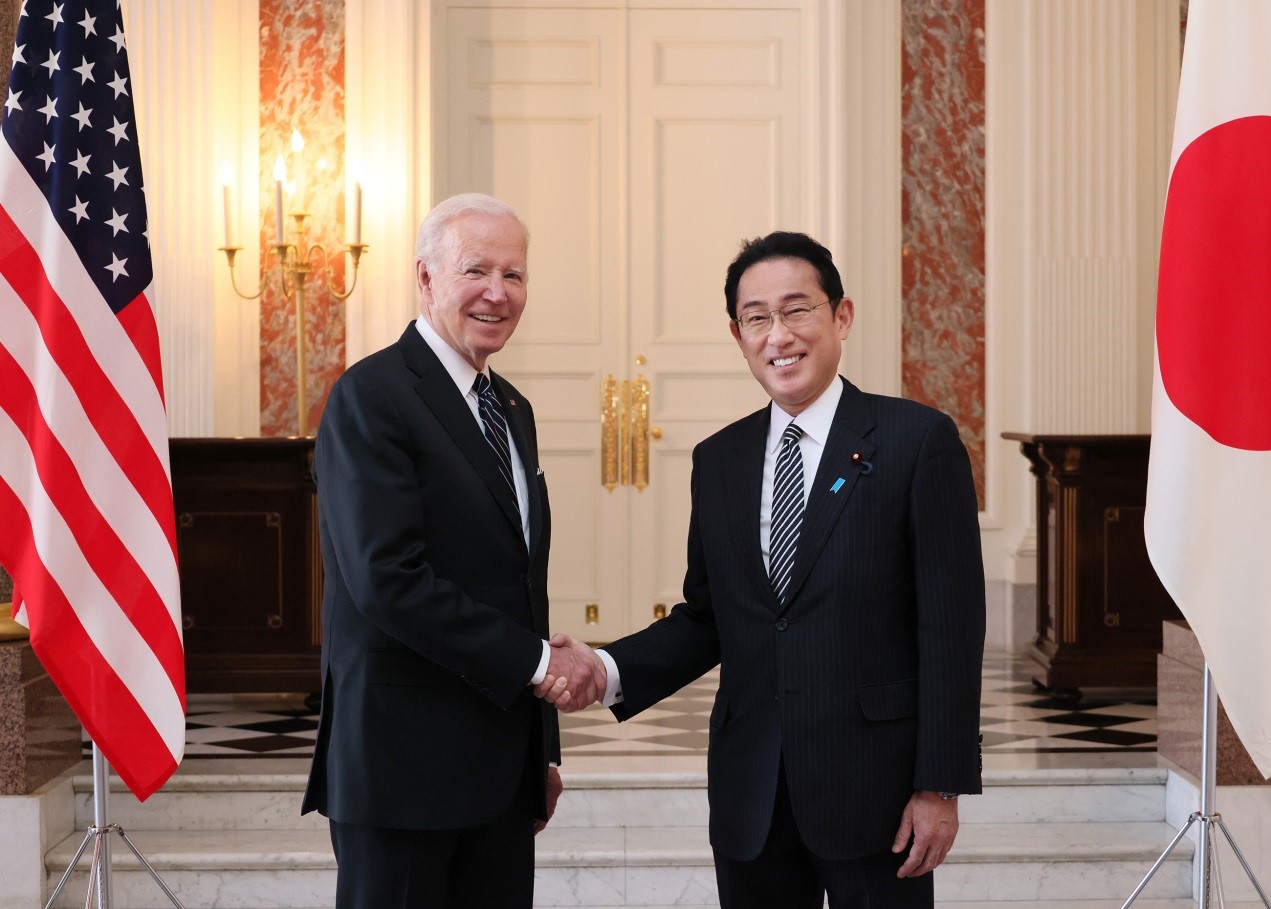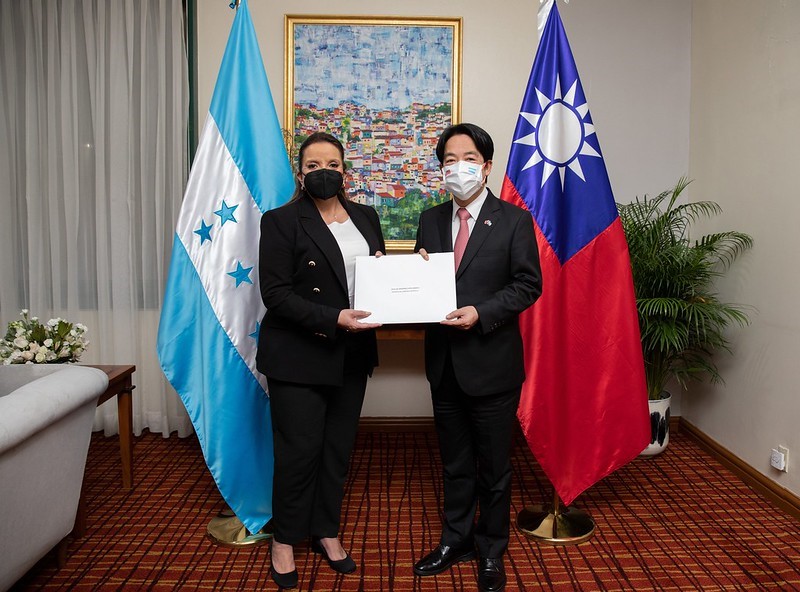An Indo-Pacific Strategy should promote informal multilateral military contingency planning. For example, an informal China Crisis Group should facilitate defense planning by the U.S., Japan, Taiwan and other democracies to prepare for Chinese aggression before it starts. Picture source: CogitASIA, April 10, 2019, CSIS,
Prospects & Perspectives 2022 No. 18
The Indo-Pacific Strategy We Need
By Richard D. Fisher, Jr.
March 31, 2022
Consider a possible near future…
June 5, 2023, New Taipei City, Xindian District: Just before dawn Hsiao-jing “Pinky” Chan hauled her Javelin anti-tank missile to the 3rd floor of what was once the center of her family’s life, their majestic 25-story apartment building set on a hillside amid scores of others. Now all she can survey is a valley of death. Row after row of bombed, artillery-raked, and burnt-out buildings, and lines of fleeing families, their once peaceful lives torn asunder, just like hers.
On what was to have been her Tamkang University graduation day, she recalled tense conversations from last year when Russian forces invading Ukraine started savaging large cities to break unexpected fierce Ukrainian resistance. Chinese People’s Liberation Army (PLA) invaders applied this lesson with even greater speed, reducing key Taiwanese cities into burning hellscapes, much like the Ukrainian city of Mariupol.
In a brief moment of calm, grateful to be alive, Pinky considered what had really led Xi Jinping to shock the world with his April invasion? She remembered that everyone was distracted, first with Russia’s expanded nuclear conflict in Europe and then North Korea’s nuclear threats … and where were the Americans? Oh yes … they were overcome by events, just like their new Indo-Pacific Strategy … She was shocked that she even recalled it.
A Strategy Made Obsolete in Thirteen Days
On February 11, 2022 the Biden Administration released its Indo-Pacific Strategy of the United States. Just 13 days later, on February 24, Russian dictator Vladimir Putin made this strategy obsolete by demonstrating the failure of American and European deterrence with his invasion of Ukraine.
This appears to be the first step in Putin’s vision to press his brand of Russian nationalist domination across Europe’s frontiers, and to suborn democratic governments, in league with the People’s Republic of China’s (PRC) own hegemonic ambitions — to shatter U.S.–led nation-state order.
These threats and their relevance to U.S. interests in the Indo-Pacific are not reflected in the Indo-Pacific Strategy, instead a press release issued by the Biden White House on February 11 offers unjustified confidence:
“The Biden-Harris Administration has made historic strides to restore American leadership in the Indo-Pacific and adapt its role for the 21st century. In the last year, the United States has modernized its longstanding alliances, strengthened emerging partnerships, and forged innovative links among them to meet urgent challenges, from competition with China to climate change to the pandemic.”
The strategy document then outlines five “objectives” that the U.S. will pursue with “allies, partners…[and] regional institutions;” Advance a free and open Indo-Pacific; Build connections within and beyond the region; Drive regional prosperity; Bolster Indo-Pacific security; Build regional resilience to transnational threats.
But since February 24 this order has been made obsolete; the fourth objective is now paramount: how to prevent a Russia and China, no longer deterred by U.S. and allied power, from starting wars.
Now the Indo-Pacific Strategy does highlight the Biden Administration strategy of “Integrated Deterrence;”
“Integrated deterrence will be the cornerstone of our approach. We will more tightly integrate our efforts across warfighting domains and the spectrum of conflict to ensure that the United States, alongside our allies and partners, can dissuade or defeat aggression in any form or domain.”
In the Summer of 2021 U.S. Secretary of Defense Lloyd Austin introduced this concept as not just relying on military means, aidbut also “federal agencies, partner nations and allies…using every military and non-military tool in lock-step with allies and partners.”
But the Chinese military challenge is becoming much more direct and existential, requiring first, far greater military deterrence. China is now sprinting to achieve nuclear superiority over the United States; the PLA could amass over 4,000 nuclear warheads by late in this decade, while the Biden Administration has limited the U.S. to 1,550 warheads by extending U.S. adherence to the 2010 New Start nuclear reduction treaty to 2026.
In his Ukraine campaign Putin gave Chinese leader Xi Jinping a resounding validation for seeking nuclear superiority.
It was Russian superiority in theater nuclear weapons in Europe — at least 2,000 vs. only 100 U.S. tactical nuclear bombs, and about 40+ French theater nuclear weapons — that deterred the U.S. and the North Atlantic Treaty Organization (NATO) from imposing a No-Fly-Zone over Ukraine, and deterred President Joe Biden from approving NATO transfers of Russian-made combat aircraft to help Ukraine.
But it could get much worse. While Putin may yet lose his war in Ukraine, if his regime survives it will become much more dependent on China for aid, commerce, and even new weapons. But their strategic entente, a decade in development, already includes “strategic defense” cooperation, meaning they could also have started “nuclear offense” cooperation.
China and Russia could combine their nuclear forces to coerce the United States from trying to halt a Chinese invasion of Taiwan, just as China and Russia could push North Korea to initiate diversionary nuclear or non-nuclear conflicts, with China having provided significant assistance to enable Pyongyang’s nuclear capabilities.
And then there is the looming nuclear threat from Iran, which has also been discreetly assisted by China and more recently, Russia.
We may have an indication of the extent to which Xi Jinping is no longer deterred by U.S. power. On March 10 a Russian regime opponent named Vladimir Osechkin revealed an alleged analysis from a Russian secret service member noting that until the Russian invasion of Ukraine, Xi was planning to invade Taiwan in the Fall of 2022.
While there is no way to validate this information, there is no questioning that the PLA is building up to invade Taiwan, and the fact that time is running out to prevent this disaster.
The Indo-Pacific Strategy We Need
There is no greater priority for a U.S. Indo-Pacific Strategy than the prevention of a Chinese invasion of Taiwan, the Philippines, or India, which now requires that the Chinese Communist Party (CCP) leadership be made to fear the power of the United States and a coalition of states that are armed and coordinated to defeat Chinese aggression.
This, in turn, requires an acknowledgement and a constant public information campaign that provides awareness of how China and Russia, along with North Korea and Iran, constitute a new “Axis of Evil” capable of a full range of nuclear and non-nuclear coercive and warfighting strategies — at varying levels of cooperation.
Such a strategy also requires specifically exposing the CCP’s explicit ambitions for hegemony on earth, and in outer space, where the CCP seeks to control the “Space Economy” which it envisions driving prosperity on Earth in future centuries.
As the Biden Administration correctly assisted the September 2021 creation of Australia-United Kingdom-United States (AUKUS) defense arrangement to help Australia acquire nuclear powered attack submarines, it must also lead in building up U.S. nuclear forces to deter a combined China-Russia nuclear threat, quickly building a much larger theater deterrent capability in Asia and Europe.
This will require that the U.S. abandon the New Start Treaty with Russia, and then build and deploy thousands of new nuclear warheads. There are some in Washington who oppose the U.S. building of new nuclear armed sea-launched cruise missiles (SLCM-N), but it is crucial that these be deployed along with new nuclear armed medium and intermediate range ballistic and hypersonic missiles.
It is also necessary to approach Japan, South Korea and Australia to offer joint basing of tactical nuclear weapons when their respective governments determine that is required. As nuclear attack submarines may not be ready for Australia for a decade, it is necessary for the U.S. to offer joint-basing of strategic bombers like the B-1A, to provide a near-term very long range non-nuclear deterrent.
To make clear to the CCP that its aggression against Taiwan or any other neighbor will not succeed, or that Russian or North Korean aggression will not be allowed to provide diversionary cover, and that the CCP will not achieve its ambitions for global hegemony, the Indo-Pacific Strategy must include a campaign to politically and economically isolate Russia and China, as well as to strengthen the isolation of North Korea and Iran.
It is necessary to build both formal and informal coalitions that prevent the leakage of dual-use technologies, like the former Coordinating Committee for Multilateral Exports (COCOM), and that institute much greater Asian-NATO-U.S. intelligence sharing and military coordination.
In the absence of a formal alliance of Asian democracies that can coordinate military planning and action to the degree of NATO, an Indo-Pacific Strategy should promote informal multilateral military contingency planning. For example, an informal China Crisis Group should facilitate defense planning by the U.S., Japan, Taiwan and other democracies to prepare for Chinese aggression before it starts.
Also, as the Trump Administration pressured and convinced European allies to increase their defense spending, an example of positive leadership that could yet help Russia to decide not to expand its war beyond Ukraine, it is also necessary for Washington to provide similar leadership to convince Asian democracies, especially Taiwan, Japan, South Korea and Australia, to significantly increase their defense budgets.
Ukrainians have demonstrated to Taiwan why it is crucial to stockpile missiles, artillery and urban warfare weapons like drones and portable anti-tank rockets, while devising a crisis program to expand trained reserve forces and to enable millions of civilians to receive basic weapons and combat medical training.
In addition, a new Indo-Pacific Strategy will require the tough leadership necessary to reorder domestic “progressive” priorities. Requirements to deter existential threats from China and Russia now dictate that the hundreds of billions of dollars democracies were planning to throw at “climate change” be devoted to immediate massive requirements for increased defense capabilities.
(Richard D. Fisher, Jr. is a senior fellow with the International Assessment and Strategy Center)


